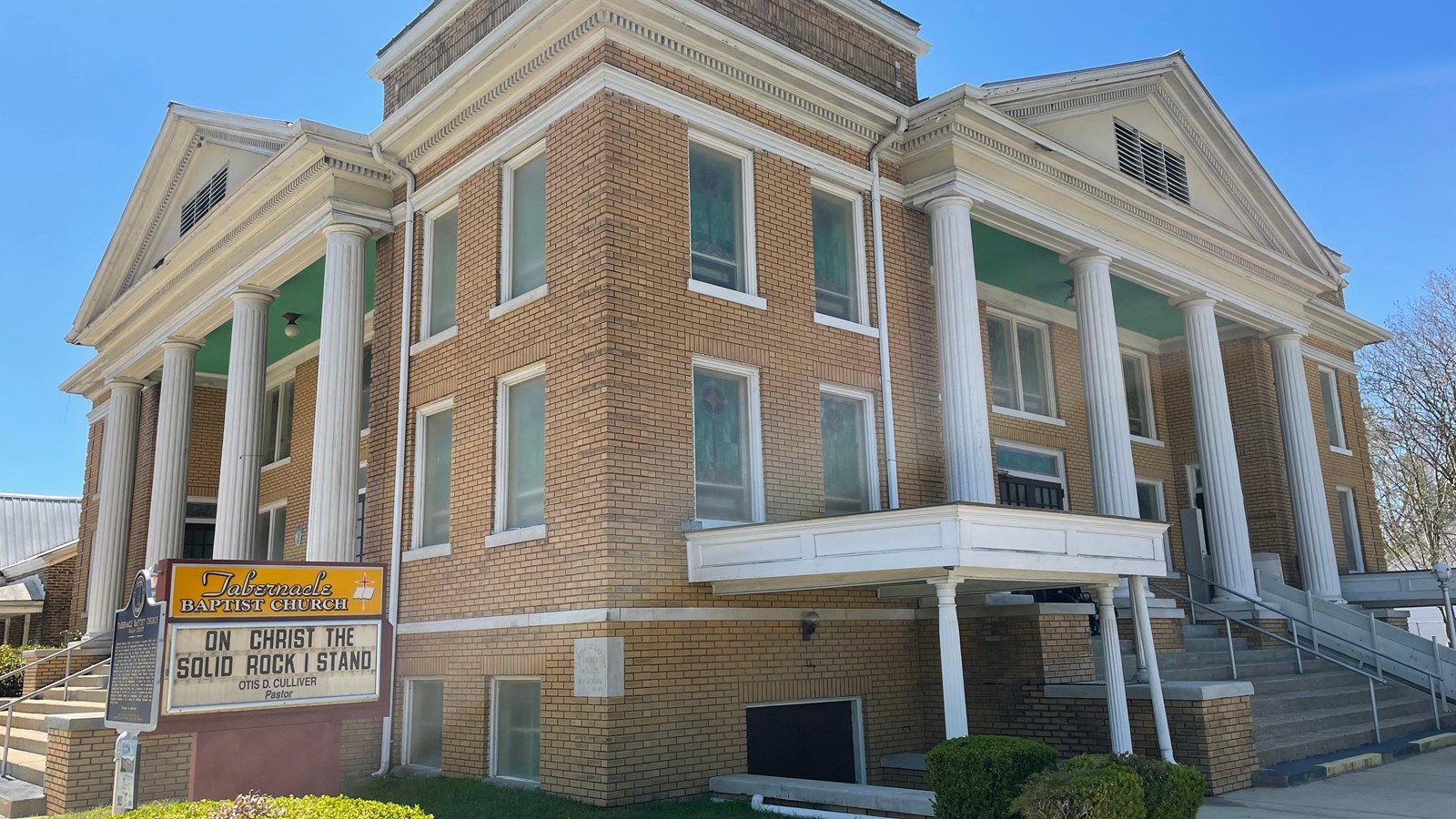Last updated: September 6, 2023
Place
Historic Tabernacle Baptist Church in Selma

NPS Photo
Information Kiosk/Bulletin Board, Parking - Auto
Tabernacle Baptist Church is the site of the first mass meeting of the Selma Voting Rights Movement.
On May 14, 1963, upon the death of veteran civil rights organizer, Sam Boynton, a memorial service and mass meeting was held to galvanize the Black community in segregated Selma. Mr. Boynton's widow, Mrs. Amelia Boynton, along with fellow civil rights activist, Rev. Bernard Lafayette became the guiding force for the memorial and mass meeting. Mr. and Mrs. Boynton had been organizing in Selma since the 1930s to prepare the Black community academically and emotionally to register to vote.
Selma had an emerging Black middle class that consisted primarily of medical doctors, teachers, college professors, pharmacists, business people, and dentists. Many of them were Tabernacle members. Tabernacle's pastor, Rev. Louis Lloyd Anderson, who came to Selma from Chicago in 1954 had not always been subjected to Jim Crow laws. So when Rev. Lafayette and Mrs. Boynton sent out an invitation to Selma's Black churches to host the memorial service for Mr. Boynton, Rev. Anderson daringly accepted on behalf of Tabernacle. The deacons who were primarily professors and descendants of the people who had built the magnificent Classical Revival edifice in 1922, objected as they did not want their church bombed like those in Birmingham, AL. Rev. Anderson’s response was:
“If you will not permit it to be held on the inside, we will hold it on the sidewalk and I will tell everyone why.”
The first mass meeting was held with 300 in attendance. These included Sheriff Jim Clark, and many recently deputized gun-carrying white men, many only 18 years old. They lined the walls of the church as mass meeting attendees sang, prayed, and memorialized Mr. Boynton. Mr. James Foreman, SNCC Chairman was the main speaker. The "High Cost of Freedom" was the title of his address.
Tabernacle members and their friends had used the Tabernacle basement for secret underground voter registration sessions since the 1930s. Tabernacle member, Mrs. Marie Foster was one of the trainers. She and Rev. John D. Hunter, former President of the Selma Chapter of the NAACP before it was banned, worked secretly for voting rights despite an injunction that prohibited "gatherings of no more than 3 Negroes."
They joined with six other people who defied the court order by inviting Dr. Martin Luther King Jr. to Selma in 1964 to help with voter registration. Mrs. Amelia Boynton, Mr. Ulysses Blackman, Mr. Ernest Doyle, Mrs. Marie Foster, Mr. William Gildersleeve, Rev. John D. Hunter, Rev. F. D. Reese, and Rev. Henry Shannon became known as the “Courageous Eight.” Mrs. Foster’s brother, Dr. Sullivan Jackson, DDS, was a Tabernacle Trustee. The Sullivan Jackson home was the headquarters for Dr. King and staff in segregated Selma where colored people could not use public accommodations such as lodging, rest rooms, water fountains, restaurants, etc.
